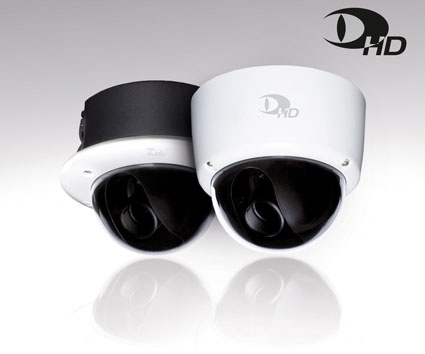Take a Good Look
A burglary takes place and there is a great deal of anger about the resulting damage. Fortunately the premises are equipped with a video system which enables the incident to be ana...

A burglary takes place and there is a great deal of anger about the resulting damage. Fortunately the premises are equipped with a video system which enables the incident to be analyzed in detail. However, the subsequent viewing of the images causes great disappointment because although the recordings show that a theft occurs, it is impossible to identify the thieves. And this despite the fact that a device was specifically chosen whose recordings were described as being "admissible in courts of law". What does "admissibility in courts" actually mean and what should users take into account?
Admissibility in courts means that the video recordings are accepted and permitted as evidence in courts of law. The admissibility of recordings as evidence is proven by a certificate which is issued, amongst others, by LGC Forensics, formerly known as Kalagate. They check whether the recorder is protected by encryption technology, which safeguards against remote access to the ‚closed‘ system and prevents any outside manipulation. Additionally, the devices must be designed to be forgery-proof in order to verify that the images are unedited. In short: it must be certain that the images are not manipulated on the way from the recording device to the courtroom, as could happen for instance when the footage is transferred to storage media such as DVDs.
There are different ways to prevent attempts at manipulation. One practice is to integrate an electronic watermark. This process embeds certain information, so-called watermarks, into the image when it is saved on the recorder. If an attempt is later made to edit or alter the image by any means, the watermark is automatically deleted. A check whether the watermark still exists is all that needs to be done in order to prove the originality of the images. Confirmation of the usability of the images in courts of law thus only refers to the transfer of the image data from the recorder to the court. It does not, however, say anything about the quality of the images.
Horses for Courses
It is important to choose the right technology. When deciding to utilize a certain camera, it should already be considered what the images will be used for. Therefore the question is whether the user wants to notice, detect, recognize or even indentify? Noticing means that it can be observed that something is happening. With detection, it is possible to distinguish between humans and animals. Recognition is even more precise: it allows differentiation between a man and a woman. Finally, the most precise level is identification. This means that an operator could clearly state that the camera has captured, for example, Mrs XY.
Such considerations have to be made before the installation of a surveillance system. If it is initially only required to have a broad overview of an extensive car-park, one cannot expect later to be able to indentify an individual number plate.
Pixel or resolution error is a common issue, particularly in connection with new HD technology. A high-quality high-definition camera that records in 16:9 image format provides a wider field of view than could be achieved with a conventional SD camera. For example, at a petrol station it might now be possible to view three fuel pumps, whereas before it was only possible to view two. An outstanding depth of field and higher resolution than 4CIF are further benefits that, together with the zoom function, provide corresponding potential.
Dotty About You
These are excellent properties for an overview camera. However, they do not work with every kind of application. In order to be able to indentify a face, for instance, it must be displayed in the image with a width of at least 150 pixels. This requirement is valid for both standard definition and high definition. Whereas previously similar calculations were made to choose a suitable lens, this approach is frequently neglected with HD technology. This is due to the notion that the zoom functionality could compensate for any shortfalls of the lens. However, at the end of the day, a pixel remains a pixel, and not even the best zoom in the world can do anything about that. Thus, if the goal is to identify people, it must be ensured that the real pixel size which is needed to identify faces is actually achieved.
Another important point is the fact that an increase in the number of pixels comes at the expense of the camera's light sensitivity. Generally, during night situations a megapixel camera will produce poorer results than an SD camera - smearing effects often appear when there is motion although such effects can be prevented by choosing higher shutter speeds. One should not forget though that this will only help if there is enough ambient light. Light is also an issue to be considered by itself: if the camera is exposed to extreme lighting conditions, such as strong backlight caused by a glass facade for example, it should be ensured that the camera is capable of mastering such conditions. In such cases a high dynamic range is often more important than the number of pixels. It should also be assessed if monitoring from several angles is better than one single wide-angle perspective at HD or megapixel resolution. When installing a video system, the most suitable technology for the respective application should be chosen.
Taped Up
Besides selecting the camera, it is of course also important to choose a suitable recording device. Is the recorder capable of recording at a sufficiently high resolution? Does the device operate reliably and offer high failure safety? After all, what would be the point of images being permitted as evidence in court when the recorder fails at the decisive moment?
Even the best technology will be to no avail if it was incorrectly installed in the first place. Obvious really, but often forgotten: if the face of a customer who is paying at the checkout counter is to be recognized, the camera must be installed at an angle that is as low as possible relative to the face. If the camera is mounted in the ceiling, a hat or the hair parting of the customer will be clearly recognizable. The customer‘s face though will be not be visible, unless he happens to look directly into the camera.
There is yet another point to be taken into account. The larger the focal distance, the larger the dead angle in front of the camera becomes. In the worst case the dead angle could mean that recordings show that suspicious activity is taking place somewhere at the back. However, at that distance the person can't be identified. As soon as the person comes closer to the camera though they stand within the dead angle of the camera and can no longer be seen at all.
Three Golden Rules
These are only two examples of the many errors that unfortunately occur over again in practice. Such errors could be avoided easily by clearly defining what the images will be used for prior to any purchasing decision. There are three crucial points that need to be considered when talking about the usability of video recordings in court. Firstly, the right systems must be chosen. Secondly, these systems need to be correctly installed. And thirdly, there must be evidence that the images are tamper-proof.
New technologies such as megapixel resolution, or high-definition cameras in particular, offer numerous benefits that can however only be realized if the technologies are used correctly. Before a purchasing decision is made, users need to precisely define what should be achieved by the surveillance installation and plan the system accordingly.













